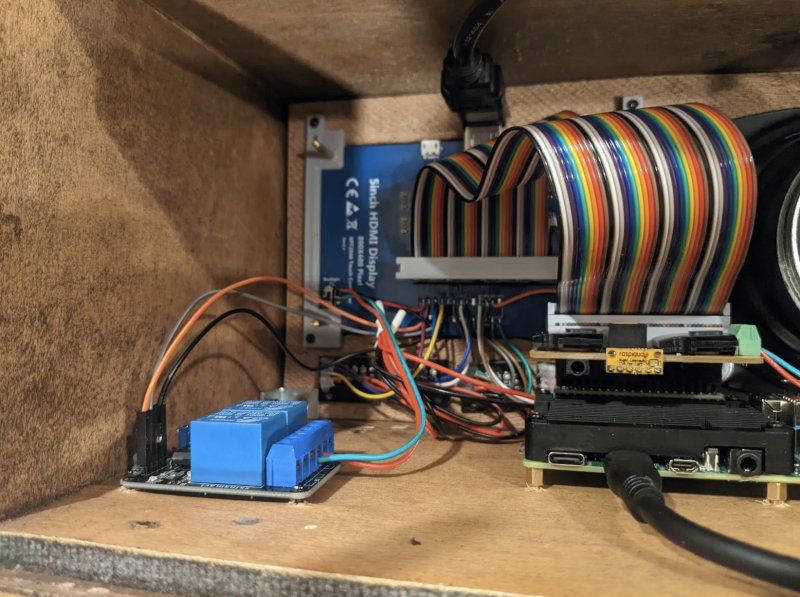Despite his thoroughly modern career as a software engineer in Silicon Valley and a CV that lists VMware and Google among his credits, Raju has a fondness for the old days. “I have always loved to tinker and repurpose old hardware to build something new”, he says, favouring Raspberry Pi boards because they are “perfect” for the projects he likes to work on since “they are so easy to setup and get started with”.
A nod to nostalgia
For the retro radio build Raju wanted something that would force us to slow down in our current fast-paced digital world. He says the analogue controls of the radio are in some way the opposite of how we interact with our devices today with touch and voice. The project was also meant to remind Raju of his childhood of using analogue knobs to change stations. His lengthy search for the ideal old radio eventually led to him choosing one with a speaker to one side and enough space to cut out a window and fit a new 5in screen. His Retro World Radio can tune in to a vast collection of internet streaming radio stations from around the globe, and features a vintage map to browse and find radio streams.
Keep on improving
Raju had seen other retro radio upcycling projects online, and was particularly keen on creating one similar to this internet radio project. He used a 2GB Raspberry Pi 4 because he “needed the extra horsepower of Raspberry Pi 4 to get experience with the map display”. He bought the main components from online stores such as Adafruit.
Sourcing a suitable radio and writing the software interface were his main challenges, since backend engineering is his professional forte. “I enjoyed the experience of writing all the Javascript code for the display and I am still thinking of ways to improve the overall aesthetic. Raju designed the new parts himself including a new front face for the radio, using CAD software to design and create some 3D-printed parts. He also wrote software for the Retro World Radio, making liberal use of existing SDKs and open source or free online libraries.
He began with a development platform using a breadboard, which allowed him to test the software. The first version had three rotary knobs mapped to Raspberry Pi’s GPIO pins, but Raju later decided to use four knobs. These pull in internet streams from Radio.Garden and can be chosen by location as well as genre.
Having completed the radio project, Raju is now gearing up to combine his love of tinkering with tech with LEGO, and has recently acquired a Raspberry Pi Zero W.





